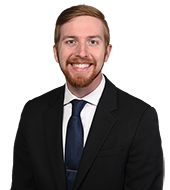Employment Law Developments that will Impact the Health Care Industry in 2021
The impact of COVID-19 on the health care industry can hardly be overstated. Numerous important employment law developments occurred in 2020 related to COVID-19 that impacted the industry, including guidance on mandatory vaccination, COVID-19 whistleblower claims, and claims from individuals exposed to COVID-19 against employers of employee family members. In addition, other important developments occurred outside of the COVID-19 context, including anti-racism standards from the American Medical Association (AMA), expanding state regulation of physician noncompetition agreements, important federal wage and hour guidance impacting the industry, and much more. This alert provides an overview of these key legal issues and sets forth several recommendations for health care industry employers on proactive steps to reduce employment law-related legal risks.
EEOC Guidance on Mandatory COVID-19 Vaccination
On 16 December 2020, the Equal Employment Opportunity Commission (EEOC) updated its guidance on COVID-19 vaccination requirements and employee rights under the Americans with Disabilities Act (ADA), Title VII of the Civil Rights Act of 1964 (Title VII), and the Genetic Information Nondiscrimination Act.
The ADA permits employers to implement a qualification standard, such as a vaccination requirement, that includes “a requirement that an individual shall not pose a direct threat to the health or safety of individuals in the workplace.” To determine whether a direct threat exists, employers should conduct an individualized assessment of the following four factors: (1) the duration of the risk, (2) the nature and severity of the potential harm, (3) the likelihood that the potential harm will occur, and (4) the imminence of the potential harm. If the employer determines that an unvaccinated employee poses a direct threat, it must evaluate whether it can provide a reasonable accommodation, absent undue hardship, that would eliminate or reduce this risk. If such accommodation cannot be made, the employee can be excluded, but before any adverse action, such as termination, is taken, the employer should evaluate whether the employee has any other rights under federal, state, or local laws and should consult with counsel.
Similarly, under Title VII, once an employer is on notice that an employee’s sincerely held religious belief, practice, or observance prevents the employee from receiving the vaccination, the employer must provide a reasonable accommodation for the religious belief, practice, or observance unless it would pose an undue hardship. Because the definition of religion is broad, an employer should generally assume that a request for accommodation is based on a sincerely held religious belief. In certain situations, an employer may request additional supporting information if it has an objective basis for questioning the sincerity of the belief.
As under the ADA, if an employee is unable to receive a vaccination for COVID-19 because of sincerely held religious belief, practice, or observance, and there is no feasible reasonable accommodation available, then an employer may lawfully exclude the employee from the physical workplace. Employers should not take any other adverse actions until they have assessed whether an employee has rights under other applicable federal, state, or local laws.
Finally, the guidance clarified that simply requesting proof of receipt of a COVID-19 vaccination is not likely to elicit information about a disability and, therefore, is not a disability-related inquiry under the ADA. However, subsequent questions, such as asking why an employee did not receive a vaccination, may elicit information about a disability and would be subject to the pertinent ADA standard that they be “job-related and consistent with business necessity.”
Post-Vaccination Considerations
In December 2020, the Centers for Disease Control and Prevention (CDC) issued post-vaccine considerations for
health care personnel as health care professionals across the country began receiving COVID-19 vaccines.1 Symptoms such as fever, fatigue, chills, muscle aches and pain, and joint pain can occur following a COVID-19 vaccination, most commonly within the first three days of vaccination, and typically resolve within one to two days.
The CDC details the difference in post-vaccine symptoms and symptoms of COVID-19, so that health care facilities can distinguish between the two, and has designed strategies to limit unnecessary work restrictions on health care personnel who present symptoms after receiving a COVID-19 vaccine. Currently, the CDC does not consider cough, shortness of breath, nasal discharge, sore throat, or loss of taste or smell as consistent with post-vaccination symptoms.
The CDC’s specific strategies for minimizing the impact of post-vaccination symptoms on health care workers include the following:
- Vaccinating health care personnel immediately preceding a one- to two-day period where the employee is scheduled to be off and not present at the facilities.
- Staggering the vaccination so that not all personnel in a single department or unit are vaccinated at the same time.
- Informing health care personnel of post-vaccination symptoms.
- Evaluating post-vaccination symptoms, including COVID-19 testing if consistent with symptoms.
- Offering paid sick leave for personnel experiencing post-vaccination symptoms.
The CDC recommends all health care facilities tailor the guidelines as necessary and suggests that if an employee demonstrates symptoms that are unlikely to be from a COVID-19 vaccine but that are consistent with COVID-19 symptoms, such as cough, shortness of breath, or loss of taste or smell, the employee should be excluded from work and further evaluated.
Employees demonstrating symptoms that may result either from a COVID-19 vaccination or from a COVID-19 infection—such as fatigue, headache, and chills—should be medically evaluated. They may return to work without testing if they feel well, do not have a fever, and do not have any other symptoms of COVID-19 not associated with post-vaccination symptoms, including cough, shortness of breath, sore throat, or change in smell or taste.
Employers should advise symptomatic employees who return to work to contact a designated individual if symptoms do not improve or persist for more than two days. These employees should be excluded from work until symptoms improve, and testing should be considered.
Although fever can be a common post-vaccination symptom, any employee with a fever should ideally be excluded from work pending COVID-19 testing. In facilities where critical staffing shortages are occurring, employees with fever and symptoms limited only to those observed following vaccination can work if they feel well enough and are willing to do so.
Family Member Allegations of Transmission by Employees
Family members of workers who have contracted COVID-19 have begun to pursue legal actions to hold employers liable based on the theory that their exposure to COVID-19 was a result of failure to provide a safe workplace to an employee family member.2 Unlike such claims from employees, family member claims may not be preempted under state workers’ compensation laws.
For example, a case filed in Illinois state court against a meat-packing facility alleges that the plaintiff’s husband contracted COVID-19 while working at his employer’s meat-packing facility and subsequently infected his wife, who later died from COVID-19. The complaint alleges that the employer knew employees had contracted COVID-19 at its facility, but the employer failed to take any steps to mitigate the spread of COVID-19, such as warning employees of the dangers of COVID-19, following CDC and state health guidelines, providing employees with personal protective equipment or sanitizing breaks, and implementing social-distancing measures.
Similarly, in a case filed in New Jersey state court, the plaintiff’s husband was a conductor for the New Jersey Transit Corporation. The plaintiff alleges that her husband was instructed to continue with his normal duties while the employer did not enact any additional safety protocols or provisions to prevent the spread of COVID-19, including testing; failed to comply with federal and state health rules and guidelines regarding social distancing and the use of personal protective equipment; and failed to warn employees of the dangers of contraction and the spread of COVID-19 to family members.
However, given the ease with which COVID-19 can be transmitted, proving causation will be a significant hurdle for individuals attempting to pursue such claims. The employee’s behavior, and their family members’ behavior, will be closely scrutinized to evaluate other potential sources of exposure and whether they took appropriate safety precautions.
Nevertheless, health care employers, having faced a substantial number of COVID-19-related claims to date, can expect to see a disproportionate number of family member claims as well. To mitigate this risk, employers should follow the relevant guidelines from the CDC, the U.S. Department of Labor, the Occupational Safety and Health Administration (OSHA), and any applicable regulatory bodies promulgating safety standards for the workplace.
Increase in COVID-19 Whistleblower Cases
Employers are generally prohibited by federal and state laws from retaliating against employees who report practices that threaten public health and safety or file complaints about unsafe working conditions. Due to the increased exposure risk for health care workers, the initial unavailability of personal protective equipment (PPE) at the outset of the pandemic, and the patchwork of local, state, and federal reporting, isolation, and training requirements, health care employees are filing a significantly higher number of whistleblower claims than in prior years.
The Department of Labor’s Office of Inspector General recently issued a report finding that the number of occupational safety and health whistleblower claims—39 percent of which were directly related to COVID-19—increased by 30 percent between February to May 2020 as compared to the same period during 2019.3
The scope of such claims can be quite broad. For example, in Chicago, a nurse alleged that she was terminated after raising concerns about the effectiveness of face masks provided by her hospital employer.4 In another case, an assistant director of nursing alleged that her complaints about lack of COVID-19 training, inadequate staffing, failure to provide and train on the use of PPE, and failure to report COVID-19 exposure in the workplace led to her termination.5 In Texas, a hospital laboratory worker claimed he was terminated following his reports of concerns about health and safety protocols in the lab after he tested positive for COVID-19.6 In California, a former health care employee filed a wrongful termination claim alleging she was fired following her objection to being assigned to assess patients entering a senior living center when she had been exposed to COVID-19.7
COVID-19 whistleblowers are also protected by the qui tam provisions of the False Claims Act, which protect individuals reporting fraud. The large number of federal funds distributed through The Coronavirus Aid, Relief, and Economic Security Act and Paycheck Protection Program brings with them an increase in potential fraud claims. In addition, in anticipation of the likely increase in False Claims Act whistleblower activity, Congress created the Office of the Special Inspector General for Pandemic Recovery, and the U.S. Attorney General has created a national COVID-19 whistleblower hotline.
New York Expands Health Care COVID-19 Whistleblower Protections
On 17 June 2020, New York Labor Law § 741 (S.8397/A.10326) expanded whistleblower protections for health care workers in response to the COVID-19 pandemic. The amendments were a direct response in support of the health care employees who spoke out, either through protests, communicating directly with the media, or through social media, about the need for more PPE at the height of New York’s pandemic in the spring of 2020.
Labor Law Sections 740 and 741 already prohibited retaliation against whistleblowers who object to, or refuse to participate in, any activity, practice, or policy that constitutes improper quality of patient care. The amendments add an additional category of protected activity, as Section 741 now protects from retaliation health care employees who speak out against unsafe conditions for employees rather than patients or the general public. In addition, the amendments now protect employees who communicate with the media about matters of workplace safety or patient care, rather than to a supervisor or public body.
As was the case before the amendments, employees must first bring the improper practice, procedure, or policy to the attention of their employer so the employer has an opportunity to correct the matter before proceeding with a civil action. However, employees need not provide prior notice where imminent danger exists or where the employee reasonably believes that the employer will not correct the matter even after making the complaint.
Potential Biden Administration Policies Impacting Health Care Employers
The Biden administration may seek to return to the Browning-Ferris Industries8 joint-employer test, which focuses on the employer’s right to control and exertion of indirect control over employees, rather than the actual, direct, and regular exercise of control. Under the Browning-Ferris standard, there is a greater risk that one entity will be found to be the joint employer of another employer’s workers.
Similarly, President Biden’s labor plan favors the stricter three-prong “ABC Test” for independent contractor classification, which would make it much more difficult for individuals to be correctly classified as independent contractors. To prove an individual is properly classified as an independent contractor under the ABC Test, the employer must demonstrate that: (1) the employer does not control or direct the performance of the work both under the terms of the employment contract and in practice, (2) the work performed is outside the usual course of business for the employer, and (3) the worker ordinarily performs the same work as part of an independently established trade, occupation, or business. Because all three prongs must be met, application of the ABC Test tends to result in a worker being classified as an employee, including in the health care industry.
In addition, the Biden administration may seek to restrict the use of employee noncompetition agreements across all industries. This could have a significant impact on the health care industry, as such agreements, although increasingly regulated at the state level, are commonly used in employment relationships with physicians and other providers.
Indiana Joins Growing Number of States Regulating Physician Noncompetes
Indiana has joined a growing list of states that have either restricted or prohibited the use of noncompete agreements for physicians, including Florida, Massachusetts, Delaware, Colorado, Rhode Island, Tennessee, Texas, New Mexico, and Connecticut. On 1 July 2020, a new Indiana statute regulating physician noncompete agreements went into effect.9 The law requires physician noncompetes to contain specific provisions, including:
- Providing the physician with a copy of notice sent to patients regarding the physician’s departure.
- Providing the physician’s contact information to patients seen by the physician in the prior two years upon request, and access for the physician to copies of such patients’ records, with patient consent.
- Allowing the physician to purchase a complete and final release from the noncompete at a “reasonable price.”
The “reasonable price” standard will need to be addressed by Indiana courts. The trend of expanding restrictions on physician noncompetes, however, continues.
The AMA Recognizes Racism Is a Public Health Threat and Commits to Working to Dismantle Racist Policies and Practices in the Health Care Industry
In November 2020, the AMA took an important step in addressing the impact that systemic, cultural, and interpersonal racism has on the health of people of color by passing a resolution recognizing “racism as a public health threat” and providing a “plan to mitigate its effects.”
Among other things, the resolution does the following:
- Encourages government agencies and nongovernmental organizations to increase funding for research into the epidemiology of risks and damages related to racism and how to repair them.
- Encourages development, implementation, and evaluation of undergraduate, graduate, and continuing medical education programs that address racism.
- Directs the AMA to identify a set of current best practices for health care institutions on racism.
- Supports ending the practice of using race as a proxy for biology or genetics in medical education, research, and clinical practice.
- Directs the AMA to collaborate with stakeholders and experts to develop recommendations on how to interpret and improve clinical algorithms that currently include race-based corrective factors.
- Instructs the AMA to support research that promotes antiracist strategies to mitigate algorithmic bias in medicine.10
Stress Resources for Health Care Employees
The National Institute for Occupational Safety and Health has created online, multimedia, and interactive training11 to help nurses and their managers cope with the demands of shift work and long work hours. The program is designed to educate nurses and their managers about the health and safety risks associated with shift work, long work hours, and related workplace fatigue issues, as well as strategies in the workplace and in personal life to reduce these risks. The training is divided into 12 modules, and continuing education credits are available.
In addition, the CDC has published guidance12 regarding “Coping with Stress” during the pandemic, as well as guidance13 for health care personnel and first responders regarding “How to Cope with Stress and Build Resilience During the COVID-19 Pandemic.” The guidance includes a list of healthy ways to cope with stress during the pandemic, as well as suggestions on how to best care for one’s mental health and obtain help if needed. It also provides tips for health care personnel and first responders to enhance their resilience during the pandemic, as well as links to additional resources.
Department of Labor Opinions on Training Time and Overtime Based on Expected Number of Hours
On 3 November 2020, the Wage and Hour Division (WHD) of the U.S. Department of Labor issued a formal interpretive opinion14 regarding the compensability of time under the Fair Labor Standards Act (FLSA) when employees spend time attending voluntary training programs. The opinion addressed several hypotheticals involving health care workers.
The WHD opined that employers may treat time a nurse spends taking an on-demand webinar during off work hours, which is “directly related to her job” and creditable to a licensing requirement, as unpaid time. It noted that “special situations” exist in which the time spent attending lectures, training sessions, and courses of instruction is not regarded as “hours worked.”
For example, where an employer establishes a program of instruction that corresponds to courses offered by independent bona fide institutions of learning, voluntary attendance outside of working hours is not “hours worked,” even if the courses are directly related to the employee’s job. Additionally, time spent traveling to a training or at a training conference that is voluntary and occurs outside of work hours does not need to be compensated. However, where an employee views a webinar or training course during regular working hours, the time is compensable.
On 31 December 2020, the WHD issued a formal interpretive opinion15 regarding an in-home caregiver service’s payment of overtime based on employees’ expected number of weekly work hours. The interpretive opinion addressed a hypothetical in which an employer provides its clients with in-home caregiver services on a live-in basis or for shifts of 24 hours or more. The employer pays overtime for hours over eight in a day based on the number of hours expected to be worked by the employee in a given workweek, and then it pays supplemental pay for unexpected additional supplemental hours at a rate of one and one-half times the employee’s regular hourly rate for hours worked in excess of eight hours in a workday (regardless of the number of hours worked in a workweek). The WHD opined that the overtime premiums paid by the employer—whether expected or unexpected—could be excluded from the regular rate and credited toward the employer’s overtime obligation under the FLSA.
State laws may have different requirements, and courts may reach different conclusions, so employers should consider these opinion letters as informational guidance only.
Telemedicine Visits Sufficient to Establish Serious Health Conditions Under the FMLA
On 29 December 2020, the WHD issued a Field Assistance Bulletin regarding the use of telemedicine in establishing a “serious health condition” under the Family and Medical Leave Act (FMLA).16
Under the FMLA, a “serious health condition” is an “illness, injury, impairment, or physical or mental condition that involves” either: (1) “inpatient care,” such as an overnight stay in a hospital, hospice, or residential medical care facility, including any period of incapacity or any subsequent treatment in connection with such inpatient care; or (2) “continuing treatment by a health care provider.”17 The FMLA regulations define the term “treatment” to include “examinations to determine if a serious health condition exists and evaluations of the condition.”18 The regulations also provide that “[t]reatment by a health care provider means an in-person visit to a health care provider.”19
Given the COVID-19 pandemic, the WHD will consider a telemedicine visit an “in-person” visit under the FMLA, provided that the visit:
- Includes an examination, evaluation, or treatment by a health care provider.
- Is permitted and accepted by state licensing authorities.
- Generally, is performed by video conference.
Communications that do not meet these criteria (for example, a telephone call, letter, email, or text message) are insufficient by themselves to satisfy the regulatory requirement of an in-person visit.
DOJ’s First Wage-Fixing Indictment a Warning for Health Care and Other Employers
On 9 December 2020, a federal grand jury indicted Neeraj Jindal, the former owner of a Texas-based therapist staffing company, on wage-fixing and obstruction-of-justice charges. According to the indictment, Jindal, one of his employees, and the owner of another therapist staffing company conspired to suppress competition by exchanging nonpublic physical therapist (PT) and physical therapist assistant (PTA) rate information and agreeing to pay lower rates to certain PTs and PTAs in violation of the Sherman Act. Jindal also allegedly obstructed the federal investigation into his conduct by making false statements and withholding information.
Although the indictment is historic, it should not come as a surprise. The Department of Justice (DOJ) and the Federal Trade Commission (FTC) made their focus on anti-competitive activity clear in 2016 with their joint publication of the Antitrust Guidance for Human Resources Professionals (the Guidance). With that publication, the agencies announced that, “[g]oing forward, the Justice Department intends to criminally investigate naked no-poaching or wage-fixing agreements that are unrelated or unnecessary to a larger legitimate collaboration between the employers.”
Since publishing the Guidance, both the DOJ and the FTC have brought civil enforcement actions relating to wage-fixing and no-poach agreements. The DOJ has also initiated a number of criminal investigations into anti-competitive activity, and it entered into several consent decrees involving wage-fixing and no-poach agreements.
Health care industry employers that might be inclined to share certain employment information with noncompetitors should review the Guidance and enhance compliance training if necessary. This is of enhanced importance in light of President Biden’s campaign pledge to eliminate all noncompete agreements, “except the very few that are absolutely necessary to protect a narrowly defined category of trade secrets, and outright ban all no-poaching agreements.”
Recommendations
In light of these developments, health care industry employers should consider taking the following actions:
- Evaluate mandatory vaccination programs and ensure that they conform to EEOC guidance.
- Ensure that all steps have been taken to prevent COVID-19 exposure, consistent with CDC, OSHA, and public health authority guidelines.
- Implement a response system for receiving, documenting, investigating, and responding to whistleblowers.
- Review all provider noncompete agreements and revise them as necessary to conform with applicable law.
- Take steps to ensure that the principles set forth in the AMA’s anti-racism resolution are part of the organization’s culture, including training, reviewing hiring standards, and evaluating any use of algorithms.
- Conduct a wage hour audit to ensure that training time and overtime are paid correctly and addressed accurately in the organization’s policies.
This publication/newsletter is for informational purposes and does not contain or convey legal advice. The information herein should not be used or relied upon in regard to any particular facts or circumstances without first consulting a lawyer. Any views expressed herein are those of the author(s) and not necessarily those of the law firm's clients.










